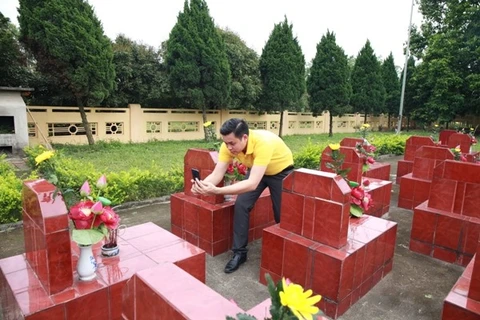Hanoi (VNA) – Deputy Prime Minister Vu Duc Dam laid out tasks for the Office of the National Steering Committee for Search and Repatriation of Remains of Fallen Soldiers during 2019-2020 at a recent teleconference in Hanoi.
Accordingly, the office must strive to complete a national database on martyrs, their families, graves, and cemeteries, as well as searching maps at commune, district, and provincial levels nationwide.
The application of technological advances in DNA analysis should be promoted to name long-lost fallen soldiers, he said, targeting to find 1,500-2,000 sets of martyrs’ remains each year, and identify around 550 unaccounted sets.
Dam asked the Ministry of National Defence to direct relevant agencies to speed up the search for remains and defuse leftover bombs at key locations, submit to the Government an identification process for remains that lack information, and complete the searching maps.
Meanwhile, the Ministry of Labour, Invalids and Social Affairs is responsible for building a DNA database storage centre and DNA testing facilities to enhance the identification of the remains of the war martyrs.
According to a report from the Ministry of National Defence, between 2016 and 2018, it had worked with the Ministry of Labour, Invalids, and Social Affairs (MoLISA) to transfer 1.9 million documents on martyrs to the Ministry of Information and Communications to build a database for the search and identification work. The MoLISA have collaborated with the Vietnam Post Corporation to design and operate an information portal on martyrs, graves, and cemeteries.
During the period, 5,886 sets of remains were found, of which, 2,670 were unearthed in Vietnam, 854 in Laos, and 2,362 in Cambodia. Since 2017, 284 sets of remains have been verified and 475 others martyrs have been identified via DNA tests.-VNA
VNA

























